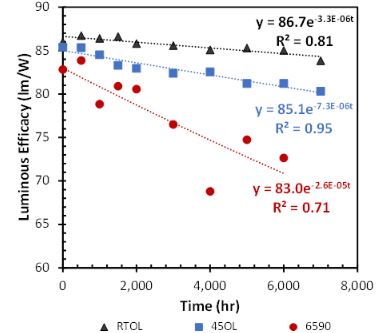My contribution to the October issue of ELECTRICAL CONTRACTOR talks about LED product warranties and the National Lighting Bureau’s recently launched Trusted Warranty Program.
LED + SSL
Ten Years of LED Rebates
While rebates for commercial lighting have been around since the 1980s, rebates for LEDs specifically didn’t see widespread acceptance until 2011. Now, 10 years later, we can take an in-depth look at LED rebates and the marketplace.
Million LED Challenge in Full Swing
Are you aware of the Million LED Challenge in California? This program is a collaborative effort by the University of California, California State University, California Community Colleges, and the California State Department of General Services. It recently expanded to include options for converting linear fluorescent lighting to LED.
PNNL Estimates Energy Savings for Advanced LED Lighting
A study funded by the U.S. Department of Energy (DOE) estimates the energy savings opportunity associated with advanced lighting research conducted by Pacific Northwest National Laboratory (PNNL) related to glare, flicker, color rendering, non-visual effects of lighting, and outdoor environmental effects of lighting.
2021 DOE/IES Lighting R&D Workshop Goes Virtual
Join the U.S. Department of Energy and the Illuminating Engineering Society at the 18th annual Lighting R&D Workshop, February 1–4, 2021, where top lighting scientists and industry thought leaders will gather to share progress, challenges, ideas, and solutions to shape the future of lighting. The 2021 workshop will be virtual and free to attend.
DOE Study Examines Age-Related Changes in LED Device Efficiency and Optical Performance
The U.S. Department of Energy (DOE) recently released a study investigating age-related changes in LED device efficiency and optical performance.
DOE Releases LED Adoption Report
The latest edition of the DOE report, Adoption of Light-Emitting Diodes in Common Lighting Applications, models the state of the U.S. general-lighting market as of 2018 and provides analysis on realized and potential energy saving benefits associated with LED lamps and luminaires.
DOE Releases New SSL Energy Savings Forecast
The U.S. Department of Energy recently published the latest edition of its biannual report, Energy Savings Forecast of Solid-State Lighting in General Illumination Applications, which models the adoption of LEDs in the U.S. general-lighting market, along with associated energy savings.
What You Need to Know About LED Drivers
This blog post by OSRAM discusses the importance of the LED driver, the quality of which can significantly impact LED product performance, reliability, and lifetime.
Phase 2 of the Next Generation Lighting Systems Indoor Evaluations Is Open for Submissions
The Next Generation Lighting Systems (NGLS) program is launching Phase 2 of its evaluations of connected lighting systems for indoor spaces. The deadline for new participating manufacturers to submit prequalifying documentation is May 17.
















